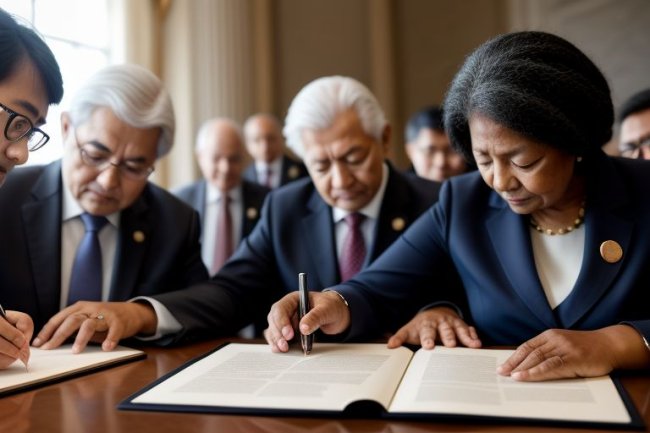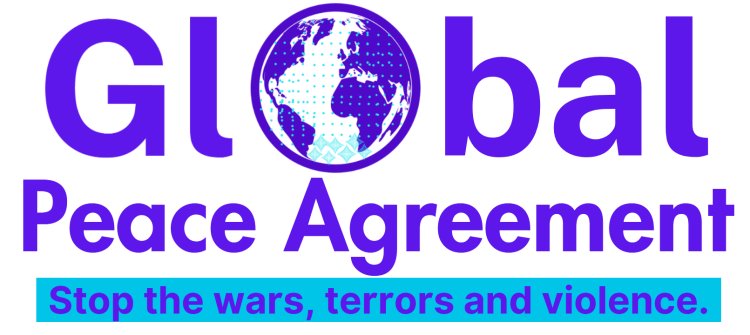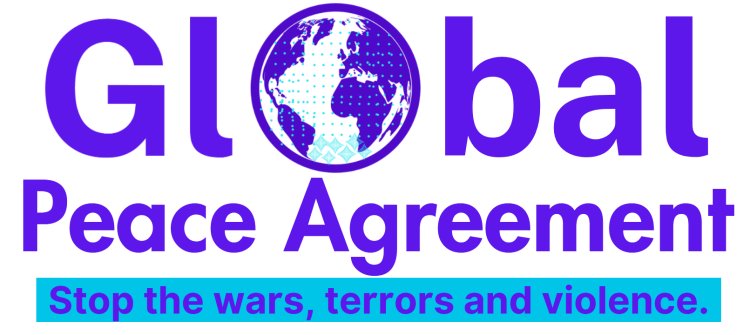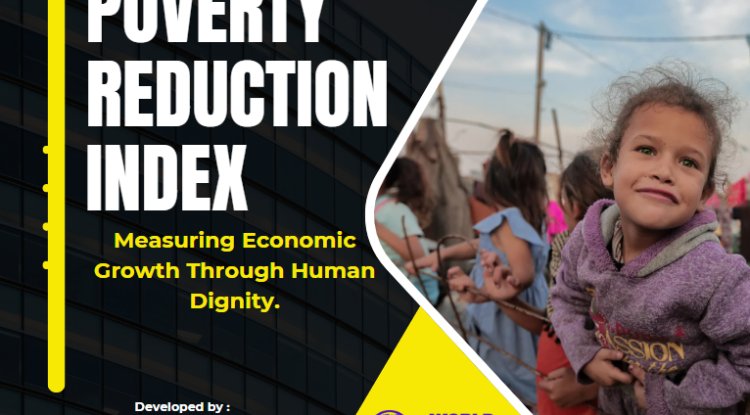Analyzing Failed Peace Accords
Pursuing peace has always been a paramount objective for nations worldwide in international relations. Historically, conflicts have arisen due to competing interests, territorial disputes, and ideological differences, often devastating consequences for combatants and civilians. In an effort to curtail the outbreak and escalation of hostilities, peace accords have been crafted and implemented, aiming to bring about peaceful resolutions and sustainable solutions. However, amidst the noble intent behind these accords, failures have been encountered, leaving societies to grapple with the persistent specter of conflict.

This analysis delves into the intricacies of failed peace accords, aiming to discern the underlying reasons that undermine their efficacy. By examining the weaknesses of the existing rules of war, it becomes evident that nations must reconsider their approaches to conflict resolution and prioritize the pursuit of peace. In doing so, they mitigate human suffering and foster an environment conducive to prosperity, development, and cooperation on the global stage. Through comprehensive examination and discussion, this chapter sheds light on the imperatives for nations to opt for peace and forge durable agreements that stand the test of time.
Factors Contributing To The Failure Of Peace Agreements
In the annals of human civilization, conflicts and wars have regrettably been a ubiquitous presence, inflicting immense suffering and widespread destruction upon nations and societies. In response to these adversities, the quest for peace has emerged as an imperative pursuit, offering a glimmer of hope in resolving disputes and averting further hostilities. Central to this endeavor is peace agreements, carefully crafted diplomatic instruments aimed at forging conciliation and fostering a climate of tranquility. Despite being borne out of the noblest intentions, peace accords often find themselves ensnared in a labyrinth of complexities and challenges, leading to outcomes that fall short of achieving enduring peace.
The profound need for peace agreements is undeniably rooted in the dire consequences of armed conflicts. From the ancient battlefields of antiquity to the modern theaters of war, the toll of war on human lives, infrastructure, and societal fabric has been grievous. The profound suffering and loss accompanying conflicts underscore the urgency to seek alternatives that can bring harmony and stability.
To this end, peace agreements have emerged as a diplomatic tool par excellence, offering a structured framework for parties to engage in dialogue, negotiate terms, and chart a path toward reconciliation. The drafting and ratification of these agreements represent a commitment to find common ground and transcend the adversarial dynamics of armed confrontations. They embody aspirations for lasting peace, laying the foundation for mutual respect, cooperation, and the preservation of human dignity.
However, the road to enduring peace is fraught with challenges, and peace agreements are not immune to the complexities of conflict resolution. Many historical and contemporary instances have demonstrated the limitations and vulnerabilities of these diplomatic instruments. Despite the best of intentions, some peace accords have faltered, leading to renewed hostilities and dashed hopes for a stable future as a result of the following reasons:
I. Historical Perspectives on Failed Peace Agreements
Throughout history, we can identify numerous examples of peace agreements that eventually faltered, leading to the resurgence of conflicts. One such prominent case is the Treaty of Versailles following World War I. Although intended to bring lasting peace to Europe, the treaty's punitive measures against Germany sowed the seeds for future tensions, culminating in World War II. Similarly, the Camp David Accords of 1978, aimed at resolving the Israeli-Palestinian conflict, faced setbacks due to complex territorial disputes and differing interpretations of the accord's provisions. By analyzing such historical precedents, we can gain valuable insights into the factors that impede successful peace agreements.
II. Complexity of Conflicts and Stakeholder Interests
One of the primary challenges peace agreements face lies in the complexity of conflicts themselves. Armed conflicts often involve deeply entrenched grievances, historical animosities, and multifaceted political, religious, and ethnic dimensions. Attempting to address these intricate issues through simplified solutions may lead to superficial resolutions that fail to address the root causes of conflict. Additionally, the interests of various stakeholders involved in the conflict may diverge significantly, making it challenging to find common ground and reach a comprehensive agreement.
III. Lack of Inclusivity and Representation
The success of a peace agreement is often contingent on the inclusion and representation of all relevant parties in the negotiation process. The lack of confidence and legitimacy in the final accord might result from the exclusion of some factions or marginalized groups.
This exclusionary approach may also create disillusionment among those not adequately represented, leading to further conflict escalation. Ensuring the participation of diverse voices and perspectives is crucial in fostering an inclusive and durable peace agreement.
IV. Failure to Address Root Causes and Structural Issues
Peace agreements that merely address the symptoms of a conflict without tackling its underlying causes are prone to failure. Root causes often encompass economic disparities, governance challenges, and systemic inequalities. Neglecting to address these structural issues can lead to simmering discontent, providing fertile ground for future conflicts to arise. Sustainable peace requires comprehensive efforts to address the root causes and work toward societal transformation.
V. Weak Enforcement Mechanisms
Even when peace agreements are reached, weak enforcement mechanisms can jeopardize their successful implementation. Some accords lack clear frameworks for monitoring and enforcing compliance, leaving room for parties to renege on their commitments without consequence. Strong, impartial enforcement mechanisms are vital to holding parties accountable and ensuring the agreement's longevity.
VI. External Interference and Geostrategic Considerations
External interference from other nations or vested interests can undermine the prospects of a successful peace agreement. In some cases, powerful countries may have geopolitical motivations that diverge from the interests of those directly involved in the conflict. Such interference can perpetuate instability and prevent genuine and sustainable peace.
VII. Psychological Barriers and Societal Trauma
War and conflict inflict profound psychological wounds on individuals and societies. Deep-rooted trauma and animosity can create psychological barriers that hinder the reconciliation process and make trust-building a formidable challenge. Healing societal wounds and fostering empathy among adversaries are prerequisites for successful peace agreements.
VIII. Economic Incentives for Conflict
Regrettably, some groups and individuals may benefit economically from perpetuating conflict. The illicit trade of natural resources, arms, and human trafficking can create perverse incentives for continuing hostilities. Addressing economic motivations for conflict and establishing viable alternatives can help dismantle the drivers of violence.
IX. The Cost of War and Humanitarian Consequences
The human and economic costs of war are immeasurable. Armed conflicts devastate entire communities, displace populations, and disrupt essential services like healthcare and education. The humanitarian consequences of war underscore the urgency for nations to prioritize peaceful resolutions, protecting the lives and well-being of their citizens.
In light of the above factors, it becomes evident that nations must embrace peace as a strategic imperative instead of resorting to war. Pursuing peace demands the recognition of the complexity of conflicts, genuine inclusivity, addressing root causes, and enforcing agreements effectively. By opting for peace, nations can promote stability, development, and cooperation, creating a world where the prosperity and well-being of all humanity can thrive. In overcoming the challenges posed by failed peace agreements, the path to a more harmonious and peaceful future emerges, offering hope for a world free from the scourge of war.
Historical And Contemporary Case Studies Of Unsuccessful Accords
Throughout history and more recently, the world has witnessed numerous attempts to achieve peace through formal agreements and accords. These diplomatic endeavors, born out of a genuine desire to end hostilities and promote stability, have aimed to address conflicts ranging from territorial disputes to ideological differences. While some peace agreements have brought about lasting tranquility, others have faced significant challenges, ultimately proving unsuccessful in their quest for peace.
Let us examine historical and contemporary case studies of unsuccessful accords and the reasons for their failure.
1. The Treaty of Versailles (1919):
Following the devastation of World War I, the Treaty of Versailles was crafted to establish lasting peace in Europe. The accord sought to hold Germany accountable for the war and imposed harsh penalties, including territorial losses and reparations. However, the treaty's punitive measures sowed discontent among the German populace, fueling nationalist sentiments and setting the stage for Adolf Hitler's rise to power. World War II broke out as a result of the treaty's failure to address the fundamental political and economic causes of the conflict, highlighting the necessity of comprehensive and equitable conflict settlement.
2. The Oslo Accords (1993):
The Oslo Accords, brokered between Israel and the Palestine Liberation Organization (PLO), aimed to resolve the Israeli-Palestinian conflict by outlining a roadmap for peace and Palestinian self-governance. Despite early optimism, the accords faced significant obstacles, including disagreements over Jerusalem's status, the right of Palestinian refugees to return, and the expansion of Israeli settlements in the occupied territories. The 1995 killing of Israeli Prime Minister Yitzhak Rabin and the ensuing war weakened confidence between the parties and made it more difficult to put the agreement's principles into practice, together with these outstanding problems.
As a result, the peace process stagnated, leading to ongoing tensions and a lack of progress toward lasting peace.
3. The Dayton Agreement (1995):
The Dayton Agreement ended the Bosnian War, which resulted in ethnic cleansing and mass atrocities. The accord sought to create a decentralized state structure, sharing power among Bosnia's three main ethnic groups: Bosniaks, Serbs, and Croats. However, while ending the overt hostilities, the agreement's complex system of governance failed to address deep-rooted ethnic divisions and unresolved grievances. Consequently, Bosnia and Herzegovina remains politically and ethnically divided, with the state's institutions paralyzed by persistent ethnic tensions.
4. The Geneva II Conference (2014):
The Geneva II Conference aimed to find a political resolution to the Syrian civil war, which resulted in a protracted and devastating conflict. While representatives from the Syrian government and opposition factions participated, the talks quickly stalled due to fundamental disagreements over the role of President Bashar al-Assad in the transitional government and the future governance of Syria. The failure of the conference to make significant progress highlighted the complexities of finding a viable solution in the face of entrenched positions and diverging interests of regional and international actors.
5. The Minsk Agreements (2014-2015):
The Minsk Agreements sought to end the armed conflict between Ukraine and Russian-backed separatists in the Donetsk and Luhansk regions. Despite several rounds of negotiations, the agreements have faced repeated violations and a lack of genuine commitment from both sides. Disagreements over implementing the accords' provisions, such as the withdrawal of heavy weaponry and local elections, have perpetuated the conflict, resulting in a protracted stalemate and continued suffering for civilians in the affected regions.
6. The Colombian Peace Process (2016):
The Revolutionary Armed Forces of Colombia (FARC) and the Colombian government have been in a protracted battle for many years.
Initially rejected in a national referendum, the peace agreement underwent revisions and was eventually ratified by the Colombian Congress. However, challenges arose during the implementation phase, including the reintegration of former FARC combatants into society, land restitution, and the rise of armed groups filling the power vacuum left by the FARC's demobilization. The imperfect implementation of the accord has led to ongoing violence in certain regions of Colombia, revealing the complexities of post-conflict transitions.
7. The Doha Agreement (2020):
The Doha Agreement, brokered by the United States, aimed to facilitate a withdrawal of foreign troops from Afghanistan and pave the way for intra-Afghan peace talks. While the agreement partially reduced violence and initiated talks between the Afghan government and the Taliban, progress has been slow and hampered by continued violence and disagreements over fundamental issues. The withdrawal of foreign troops has also led to increased territorial gains by the Taliban, creating uncertainties about the future stability of Afghanistan.
The historical and contemporary case studies of unsuccessful peace agreements underscore the intricate nature of conflict resolution and the challenges faced in establishing lasting peace. These examples reveal that addressing the root causes of conflicts, inclusivity in negotiations, comprehensive implementation strategies, and robust enforcement mechanisms are crucial elements for the success of peace agreements. The complexities of conflicts demand a nuanced approach that considers historical grievances, underlying structural issues, and the aspirations of all parties involved. While the road to peace is fraught with difficulties, the lessons learned from these case studies can guide future efforts, encouraging nations to pursue peaceful resolutions that foster stability, cooperation, and prosperity for all humanity. Only through earnest commitment and a multifaceted approach can the world hope to overcome the pitfalls that have marred past peace accords and pave the way for a more harmonious future.




















